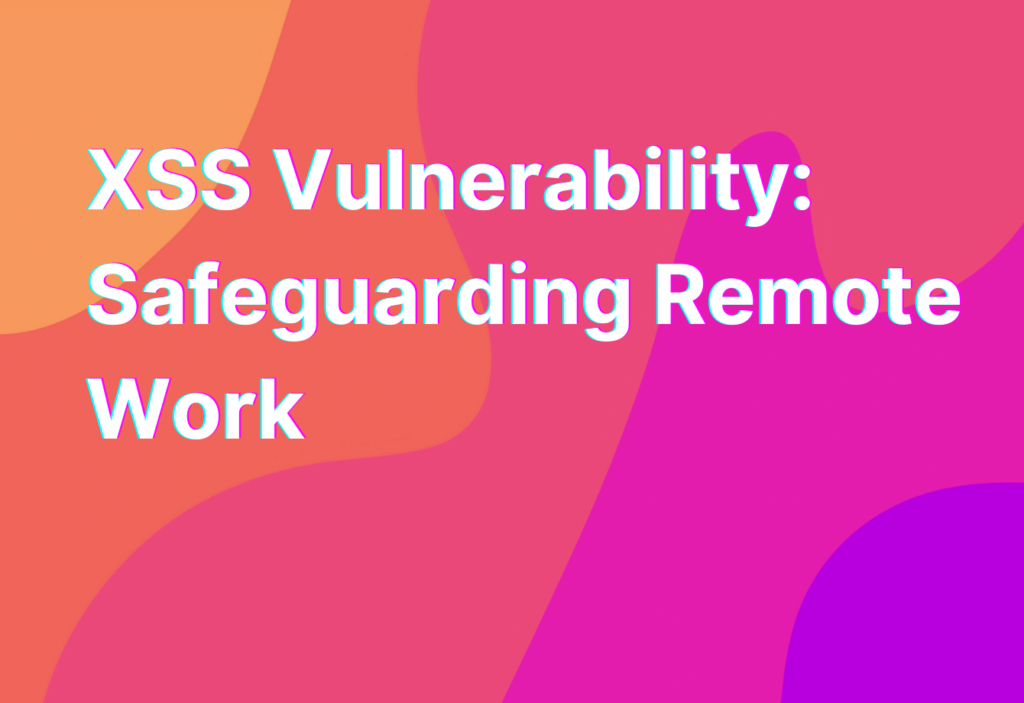XSS Vulnerability: Safeguarding Remote Work
Hey there, remote work enthusiasts! It’s Ashley, your friendly remote work advocate, back with another informative blog post. Today, we’re diving into the world of XSS vulnerability and how to safeguard your remote work. So grab your favorite cup of coffee and let’s get started!
What is XSS Vulnerability?
XSS vulnerability, short for Cross-Site Scripting vulnerability, is a type of security flaw that allows attackers to inject malicious scripts into web pages viewed by users. These scripts can then be executed by unsuspecting users, leading to various security risks.
Now, you might be wondering, “Ashley, how does this relate to remote work?” Well, my friend, with the rise of remote work, more and more employees are accessing company resources and collaborating online. This increased reliance on web-based tools and platforms makes remote workers more susceptible to XSS attacks.
The Dangers of XSS Vulnerability
Before we dive into the ways to safeguard against XSS vulnerability, let’s take a moment to understand the potential dangers it poses. XSS attacks can have various consequences, including:
- Data Theft: Attackers can steal sensitive information, such as login credentials or personal data, from remote workers.
- Malware Infection: Malicious scripts can be used to infect remote workers’ devices with malware, compromising their security.
- Phishing Attacks: Attackers can use XSS vulnerabilities to trick remote workers into revealing confidential information or performing malicious actions.
- Website Defacement: XSS attacks can be used to deface websites, damaging a company’s reputation and causing financial losses.
- Session Hijacking: Attackers can hijack remote workers’ sessions, gaining unauthorized access to their accounts and resources.
Now that we understand the risks, let’s explore some effective ways to safeguard against XSS vulnerability in remote work environments.
1. Keep Your Software Up to Date
One of the simplest yet most effective ways to protect against XSS attacks is to keep your software up to date. This includes your operating system, web browsers, plugins, and any other software you use for remote work. Software updates often include security patches that address known vulnerabilities, reducing the risk of XSS attacks.
Remember, folks, procrastination might be tempting, but when it comes to software updates, it’s best to stay on top of them. Trust me, your cybersecurity will thank you!
2. Implement Input Validation and Sanitization
Another crucial step in safeguarding against XSS vulnerability is implementing input validation and sanitization. This involves validating and sanitizing user input to ensure it doesn’t contain any malicious scripts. By carefully filtering and validating user input, you can significantly reduce the risk of XSS attacks.
For all you tech-savvy folks out there, here’s a handy tip: use frameworks and libraries that offer built-in input validation and sanitization features. They can save you a ton of time and effort!
3. Use Content Security Policy (CSP)
Content Security Policy (CSP) is a powerful tool that helps protect against XSS attacks by defining and enforcing a set of rules for web page content. By implementing CSP, you can control which sources of content are allowed to be loaded on your web pages, reducing the risk of malicious scripts being executed.
Now, I know what you’re thinking, “Ashley, that sounds complicated!” But fear not, my friends! Many web frameworks and platforms offer easy-to-use CSP configurations, making it a breeze to implement and maintain.
4. Educate Remote Workers
When it comes to cybersecurity, knowledge is power! Educating remote workers about the risks of XSS vulnerability and how to identify and avoid potential threats is crucial. Encourage your team to stay vigilant, use strong and unique passwords, and be cautious when clicking on links or downloading files.
Remember, folks, a well-informed remote worker is a secure remote worker!
Wrapping Up
Well, my fellow remote work enthusiasts, we’ve reached the end of our journey through XSS vulnerability and safeguarding remote work. By keeping your software up to date, implementing input validation and sanitization, using Content Security Policy (CSP), and educating remote workers, you can significantly reduce the risk of XSS attacks.
But wait, before you go, I have one more treat for you! If you want to dive deeper into remote work security, check out this Anti-malware guide on our website. It’s packed with essential tips to keep your remote work environment safe and secure.
Stay safe, stay secure, and keep embracing the wonders of remote work, my friends!


